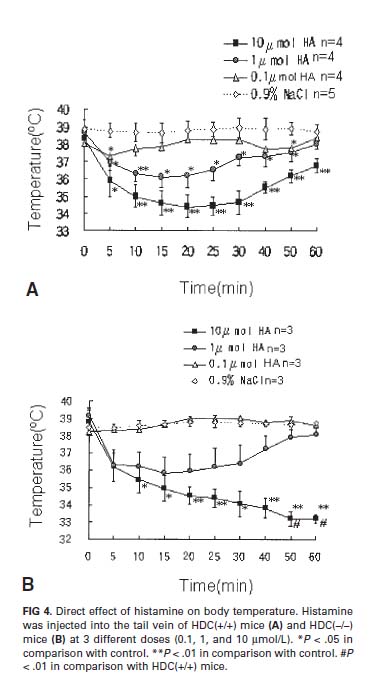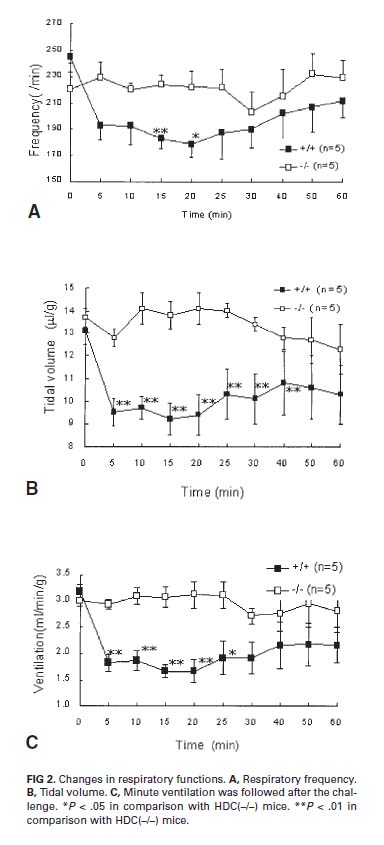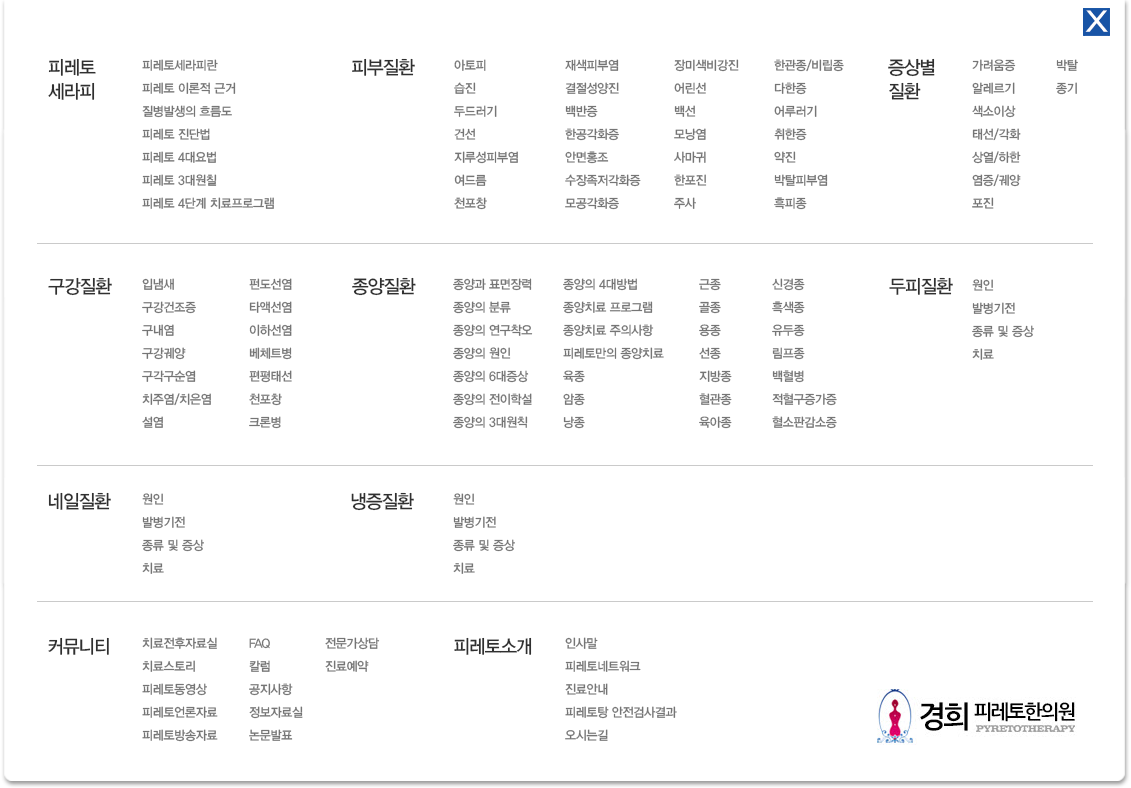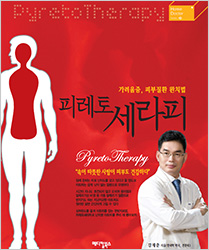1.논문 학회지
J ALLERGY CLIN IMMUNOL
VOLUME 110, NUMBER 2, 2002
2.논문제목
The control effect of histamine on body temperature and respiratory function in IgE-dependent systemic anaphylaxis
3.논문 제출자
Yoko Makabe-Kobayashi, MSc,a Yoshio Hori, PhD,a Tetsuya Adachi, PhD,b
Satsuki Ishigaki-Suzuki, PhD,a Yoshihiro Kikuchi, PhD,bYutaka Kagaya, PhD,c
Kunio Shirato, PhD,c András Nagy, PhD,d Azusa Ujike, PhD,e Toshiyuki Takai, PhD,e
Takehiko Watanabe, PhD,a and Hiroshi Ohtsu, PhDa Sendai, Japan, and Toronto, Ontario, canada
4.논문 방법 및 목적
Background: The systemic anaphylaxis reaction comprises various symptoms, including hypotension, changes in respiration pattern, and hypothermia.
Objective: To elucidate the role of histamine in each of these symptoms, we induced the passive systemic anaphylaxis reaction in histidine decarboxylase gene knockout (HDC [–/–]) mice, which lack histamine.
Methods: HDC(–/–) mice were generated by knocking out the HDC gene, which codes for the unique histamine-synthesizing enzyme. Twenty-four hours after the injection of IgE, HDC(+/+) and HDC(–/–) mice were injected with allergen and body temperature, blood pressure, and respiratory function
were monitored in each mouse.
Results: Blood pressure dropped in both the HDC(–/–) mice and the HDC(+/+) mice. In contrast, respiratory frequencydropped and the expiratory respiration time was elongated only in the HDC(+/+) mice. Body temperature was decreased in the HDC(+/+) mice and was practically unchanged in the HDC(–/–) mice. Histamine receptor antagonists blocked the body temperature drop in the HDC(+/+) mice. Intravenous histamine induced similar patterns of body temperature decrease
in the HDC(+/+) mice and the HDC(–/–) mice. Mast cell–deficient W/Wv mice did not show the decrease in body temperature; this suggests that the histamine that contributed to the decrease in body temperature was derived from mast cells.
Conclusion: According to the results of this investigation, in the passive systemic anaphylaxis reaction, respiratory frequency, expiratory time, and body temperature are shown to be
controlled by the activity of histamine, but its contribution to blood pressure is negligible. (J Allergy Clin Immunol 2002; 110:298-303.)
5.히스타민 감소가 체온 및 호흡기에 미치는 영향에 대한 논문 자료

** FIG.4 A,B 모두 히스타민의 량이 많으면 많을수록 체온의 저하를 확인할 수 있는 내용이다.

**참조 : FIG 2 에서도 호흡수나 분당 환기량이 줄어듦을 알 수 있다.
6.피레토 견해
항히스타민은 염증과 가려움증을 제거하는데 임상에서 광범위하게 사용하고 있다. 복용할 경우엔 효과가 즉각적이라 증상을 완화하는데 있어서는 드라미틱한 결과를 가져오게 된다.
실험자료에 있어서도 항히스타민제 주입후 20분에서 심부온도가 매우 저하됨을 알 수 있다. 즉 이런 경우에는 심부온도 피부온도 동시에 저하시키는 저체온증으로 빠지게 된다. 즉 피부온도가 저하될 경우엔 피부에서의 염증이나 가려움증이 줄어들게 되는 것이다.
아울러 항히스타민제를 호흡기질환 즉 천식이나 알레르기성 비염에도 사용하게 되는데 이에 대한 호흡기능에 미치는 영향을 알 수 있다.
즉 항히스타민 주입시 Respiratory frequency, Tidal volume, Minute ventilation 등에 있어 모두 감소되는 경향을 보였다. 이 또한 저체온증을 유발하여 심부온도 피부온도 동시에 저하되어 가려움증과 비강내의 염증 부종 등에 효과를 나타나게 된다는 것이다.
문제는 저체온증으로 인한 여러 부작용이 나타난다는 사실이다. 하지만 환자는 모르고 현재의 증상만을 줄이는데 급급한 것이 현실이다.




















